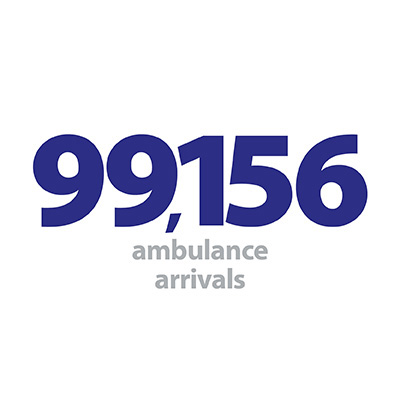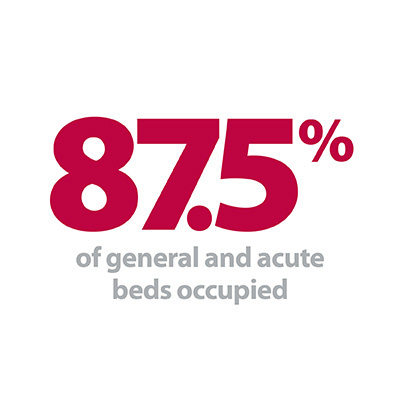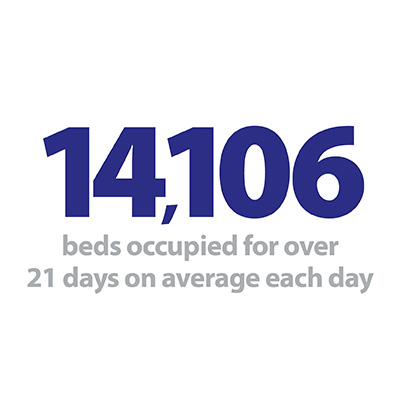


Week 4 of the winter sitreps data covers the Christmas week. This time last year, we saw a peak in demand and pressures on the frontline which was sustained until end March 2018 and placed the NHS under the media spotlight. That makes the NHS’s performance in this particular week of the year particularly interesting.
When we reflect back on this week’s figures, it is evident that the demand for urgent and emergency care continues to rise. However the hard work of trusts and their staff is evident in several real positives compared to the position at the same point last year.
- The average bed occupancy was 87.5% for the week and fell below 85% on two days this week, and to 82% on Christmas Day. This is a marked improvement on last year’s figures when the weekly bed occupancy rate failed to fall below 90.9% for the whole of winter
- There were 17 A&E diverts, nearly half the number at the same time last year.
- On average there were 1,728 escalation beds open – 38% fewer escalation beds than last year.
- The number of beds closed and occupied by those with diarrhoea and vomiting and norovirus is no where near as high as last year.
- Adult critical care bed occupancy is 76.8%, down by 5.1% compared to the same time last year.
- Ambulance handover delays of over 30 minutes or more have fallen from 17.3% last year to 9.8% this year. This is a considerable improvement – a reduction of 7.5% in delays.
These figures reflect the hard work and dedication of frontline staff and the preparations that trusts have made for winter.
These figures reflect the hard work and dedication of frontline staff and the preparations that trusts have made for winter. Admittedly flu and norovirus have not played the same central role so far this winter as last year. But it would be unfair to say that this is the only reason why length of stay and patient flow has improved. This week’s figures show that the efforts trusts and their partners in primary care, in the community and in social care made to get people home for Christmas had a real and positive impact for patients.
The data also shows that the pressures trusts and patients experienced last year with high numbers of long handover delays, A&E diverts, and higher numbers of patients staying in hospital over 21 days are not yet as severe this year suggesting the focus trusts have placed on reducing length of stay and improving patient flow has been worthwhile.
However with demand still rising for urgent and emergency care, we remain cautious about the weeks ahead. A rather startling figure from this week shows that relentless pressure on ambulance and hospital services continues, with 99,156 ambulance arrivals over the Christmas week, the highest recorded both this winter and last.
A rather startling figure from this week shows that relentless pressure on ambulance and hospital services continues, with 99,156 ambulance arrivals over the Christmas week, the highest recorded both this winter and last.
Despite the picture being slightly more positive in terms of acute hospital capacity, ambulance activity saw an additional 1,450 arrivals topping the high of last year.
Given the possibility of a cold snap or a rise in flu or norovirus, the NHS is still bracing itself for the potential for similar pressures to those experienced last year in the weeks ahead.
For a more detailed breakdown of this week’s winter sitrep data please see our summary dashboard.
Winter preparations have helped trusts cope well over busy Christmas period
Responding to the latest set of weekly winter performance data from NHS England, the director of policy and strategy at NHS Providers, Miriam Deakin said:
“The figures for the Christmas period show that preparations put in place by trusts for this winter, and the dedication and hard work of NHS staff, mean the service has coped well with a very busy couple of weeks.
“Trusts have been working well with partners in the community, GPs, and social care to support patients to leave hospital at the right time and get back to their families over the festive period.
“Although pressures do vary across the country, trusts’ efforts to get as many patients home for Christmas as possible saw bed occupancy levels falling to an average of 82% on Christmas Day and a reduction in ambulance handover delays.”
“A welcome injection of capital for some trusts has also meant many trusts could upgrade emergency departments, ambulances and increase bed capacity across the system which is borne out in the figures. Cases of norovirus and flu are also significantly lower compared to last winter.
Demand for ambulance services continues to grow with more patients arriving at emergency departments last week than at any time last winter.
“However demand for ambulance services continues to grow with more patients arriving at emergency departments last week than at any time last winter.
“The next couple of weeks will be important to get a real sense of how well the service copes with any further spikes in demand. A surge of cold weather or flu now could still have a real impact on a health and care system that is running consistently at high capacity.”